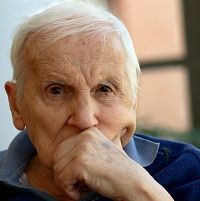Article
Light Therapy Is Effective Against Nonseasonal Major Depressive Disorder
Author(s):
Bright light treatment alone or in combination with antidepressants are effective treatment options for patients with nonseasonal major depressive disorder.

Bright light treatment alone or in combination with antidepressants are effective treatment options for patients with nonseasonal major depressive disorder, according to a study published in JAMA Psychology.
Researchers from University of British Columbia in Vancouver tested 122 adults aged 19 to 60 years with nonseasonal major depressive disorder in order to determine the efficacy of light treatment alone and in combination with antidepressants. The patients were randomly assigned into groups of about 30 participants to receive either: light monotherapy (consisting of a daily 30 minute session plus a placebo pill), antidepressant monotherapy (20 mg daily fluoxetine hydrochloride with placebo light), combination light and antidepressant, or placebo treatment (placebo pill plus placebo light). The data was collected between October 2009 and March 2014, though the trial lasted eight weeks.
The authors used the Montgomery Asberg Depression Rating Scale (MADRS) to assess patients’ changes in depression levels. Among the light, fluoxetine, combination, and placebo groups, the mean MADRS changes were 13.4, 8.8, 16.9, and 6.5, respectively. The researchers extrapolated that these data points meant that the combination and light monotherapy therapies were superior to placebo treatment using the MADRS score. However, fluoxetine monotherapy was not superior to the placebo treatment.
The primary goal, change in depression scores, were achieved by 10, nine, 16, and 22 patients in the placebo, fluoxetine, light, and combination groups, respectively. Remission was achieved by nine, six, 14, and 17 patients among the same groups, respectively.
“Bright light treatment, both as monotherapy and in combination with fluoxetine, was efficacious and well tolerated in the treatment of adults with nonseasonal major depressive disorder,” the study authors concluded. “The combination treatment had the most consistent effects.”
Previous research has so far been unable to show exactly why light therapy may realign circadian rhythms and aid symptoms of major depressive disorder.
The authors added that the treatments were generally well tolerated among the patients, and that there were only few significant difference in the adverse events directly related to the treatment methods.
“Further studies exploring mediators and moderators of response will be important,” the author concluded.




